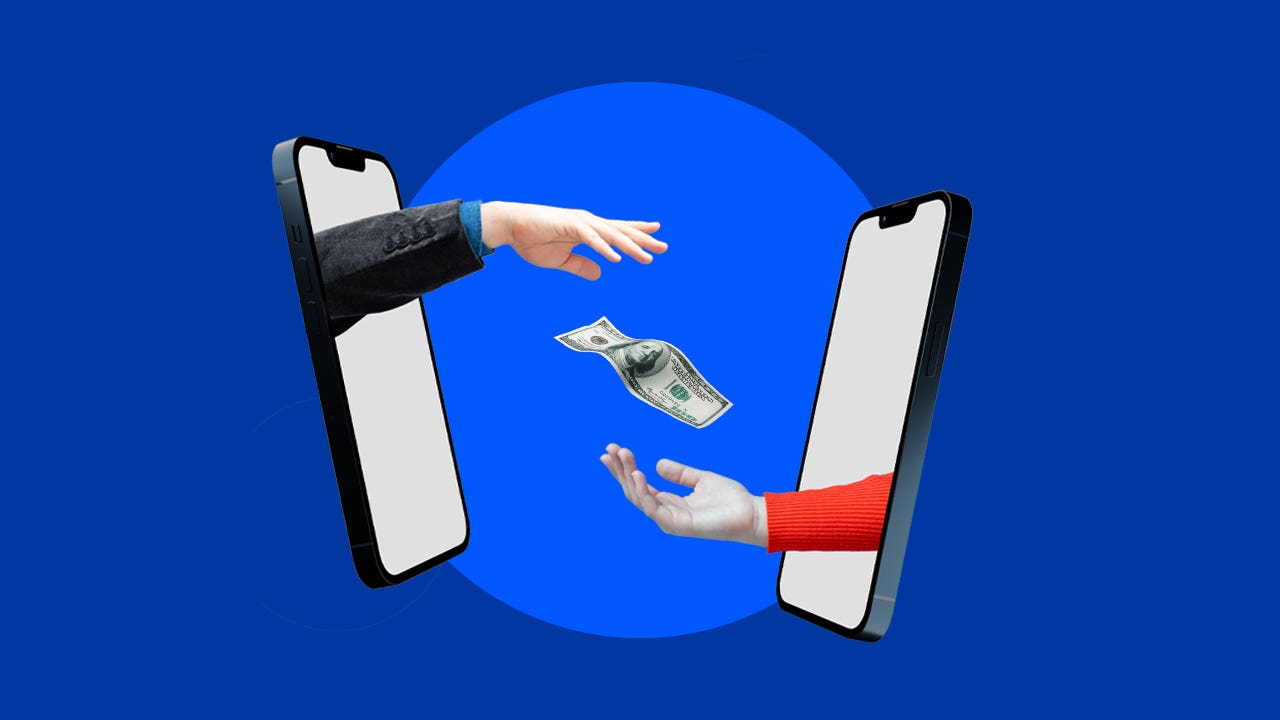Achieving financial freedom and stability: How has social media skewed our expectations of what it takes?

Key takeaways
- Social media browsing can lead to potentially destructive financial habits such as impulse buying.
- Social media influences behaviors, especially among younger generations, often leading to negative feelings about money and unrealistic expectations of wealth and success.
- With advanced shopping technology like Buy Now, Pay Later and in-app purchasing options, social media platforms make it easier than ever for consumers to give in to impulse buying.
Social media platforms have become powerful forces in shaping our perceptions, behaviors and financial aspirations. Whether it’s scrolling through Instagram’s lavish travel posts, digesting bite-sized financial tips on X (formerly Twitter) or watching TikTok influencer content, social media impacts our financial lives and how we feel about ourselves in more ways than we might realize.
One effect of social media that’s been highlighted by several Bankrate surveys is how it impacts expectations of financial stability and success, particularly among younger people. When users are constantly exposed to stories of overnight millionaires, luxury-lifestyle influencers and displays of extravagant spending, they’re bound to feel negatively about their own financial situation.
As users strive to emulate the lifestyles they see on their screens, they can fall into unhealthy money habits like impulse spending. The attempt to live up to the digitally curated ideal can distract consumers from healthy steps toward financial wellness, such as budgeting and saving.
“Social media can essentially be the new roadside billboard, only it accomplishes traditional advertising’s goal in a much savvier way. It decorates seemingly normal, everyday people in those vacations, outfits or products on the market,” says Sarah Foster, Bankrate’s principal U.S. economy reporter. “But we see in our Bankrate surveys that those purchases — especially impulsive ones — harm our finances more than benefit our lifestyles.”
Social media and money statistics
- More than half (57%) U.S. adults who use social media say it’s made them feel negatively about their finances. (Bankrate’s Social Media Survey )
- Younger generations are the most affected by social media — 30% of Gen Zers (ages 18-27) and 30% of millennials (ages 28-43) say they’ve felt negatively about finances due to social media. (Bankrate)
- Social media frequently leads to impulsive spending: 48% of social media users said they have made an impulse purchase of a product they saw on social media, and 57% of those people say they regretted at least one of their purchases. (Bankrate)
- A majority (57%) of social media users say they believe people post to make themselves look successful. (Bankrate)
- Only 25% of U.S. adults say they’re completely financially secure. (Bankrate’s Financial Freedom Survey)
- As of the beginning of 2024, 70% of U.S. consumers ages 18 and over use some form of social media. (DataReportal’s Digital 2024 report)
How social media impacts views on finances
The all-too-familiar narrative of financial success portrayed on social media platforms often leads to an unrealistic perception of wealth. Much of this has to do with the comparison that results from constant exposure to the lives of those seemingly more prosperous.
Among participants in Bankrate’s Financial Success Survey, 89 percent of Americans who have an idea of what financial success looks like for them say they haven’t yet achieved it. Furthermore, 27 percent don’t believe they will ever be able to achieve their version of financial success. This discontent can lead to irrational financial decisions, like overspending or taking on unmanageable debt to match the perceived success of others.
The exposure to carefully curated depictions of success and happiness can also impact our perception of what we need to be financially comfortable. Bankrate’s financial freedom survey found that, on average, Americans believe they would need a lofty yearly income of about $233,000 to feel financially comfortable. While this amount can be influenced by various factors, it’s impossible to ignore the role of social media in inflating these expectations.
It’s crucial to remember that social media platforms predominantly showcase people’s highlights rather than their struggles or average days.
By design, social media is a scrapbook of only the best parts of users’ lives. Every post, picture or update influences those who are watching to join along in a game of ‘Keeping up with the Joneses.— Sarah Foster, Bankrate Principal U.S. Economy Reporter
This “game” often pushes users to aspire toward a lifestyle beyond their means, fueling dissatisfaction and stress around personal finances. Financial comfort and success are highly personal and should align with each person’s unique goals and realities, not the curated lives depicted online.
How social media affects younger generations
The rise of social media platforms like Instagram and TikTok has revolutionized the way younger generations communicate, learn and perceive the world. They also impact the financial views and behaviors of these younger users, shaping their expectations about money and financial security.
It likely isn’t a surprise that younger people are more active on social media. For example, on Instagram, one of the leading social media platforms, 31 percent of users are between the ages 18 and 24, and another 30 percent are ages 25 to 34, according to April 2024 data compiled by Statista. By contrast, all users aged 45 and over make up for only 16 percent of the platform’s user base.
Social media platforms can amplify feelings of financial insecurity among the younger demographic. Of Gen Z social media users, 30 percent said they have felt negatively about their financial situation after viewing others’ posts on social media, and 30 percent of millennial users said the same, according to Bankrate. Meanwhile, only 18 percent of Gen X (ages 44–59) and 6 percent of baby boomer (ages 60-78) users reported similar feelings, indicating a significant gap in how social media affects different generations.
There’s another concerning issue with how social media affects younger people. Among parents whose children are under age 18 and active on social media, 56 percent say social media has contributed to their kids having unrealistic expectations about money. For many young people, the seemingly effortless and lavish lifestyles shown on social media can skew how they perceive financial realities.
Social media and impulse buying
While digital shopping can provide convenience, it also encourages impulse buying, through means such as targeted advertisements, in-app purchases and “Buy Now, Pay Later” (BNPL) services.
Around half (48 percent) of social media users have made an impulse buy after seeing a product on social media, according to Bankrate, and 57 percent of them regretted at least one of their purchases. Financial strain, guilt and dissatisfaction after an impulse purchase can all contribute to the prevalence of buyer’s remorse.
BNPL services, in particular, have made impulse buying on social media easier than ever. BNPL works by allowing consumers to defer the payment for a product over time, through multiple smaller payments, and in many cases without interest. With just a few taps, consumers can purchase a product they have just discovered through a social media platform, even if they don’t have the funds to immediately cover it.
According to a study by the Consumer Financial Protection Bureau, those who use BNPL services spend a median of around $1,000 in a year in total BNPL purchases. The study also indicated that these borrowers were more likely to have no savings: 25 percent of BNPL users had zero non-retirement savings, compared to 16 percent of non-BNPL users.
A major concern with BNPL services, and social media purchases in general, is that they can make it too easy for consumers to buy items they might not need or can’t afford in the long run, discouraging healthy saving habits.
Social media marketing and the Buy Now, Pay Later industry have combined to make it easier than ever to chase this illusion of perfection four interest-free payments at a time.— Ted Rossman, Bankrate Senior Industry Analyst
The ease of impulse buying on social media and the resulting financial strain can be a serious issue for consumers who are trying to live up to a particular image of success. However, being aware of these potential pitfalls is the first step toward managing them. Financial literacy, contributing to a savings account and being mindful about how you engage with content on social media can help you maintain financial health while still enjoying the convenience social media has to offer.
“The trick to avoiding financial harm on social media comes down to staying true to yourself, following accounts that encourage you to stay true to yourself and avoiding comparing your lifestyle with others,” Foster says.
Bottom Line
Social media greatly impacts the decisions people make with their money. Younger generations are most impacted by social media messages. Many develop unrealistic expectations of wealth after engaging with social platforms and seeing influencers display what appears to be an ideal lifestyle.
Across age groups, most people don’t feel financially successful. However, one can begin improving their finances by doing a financial assessment, creating a budget, paying down debt and saving what money they have in a high-yield savings account or opening a certificate of deposit from a federally insured bank or credit union. With a few small changes, financial success is within reach.






